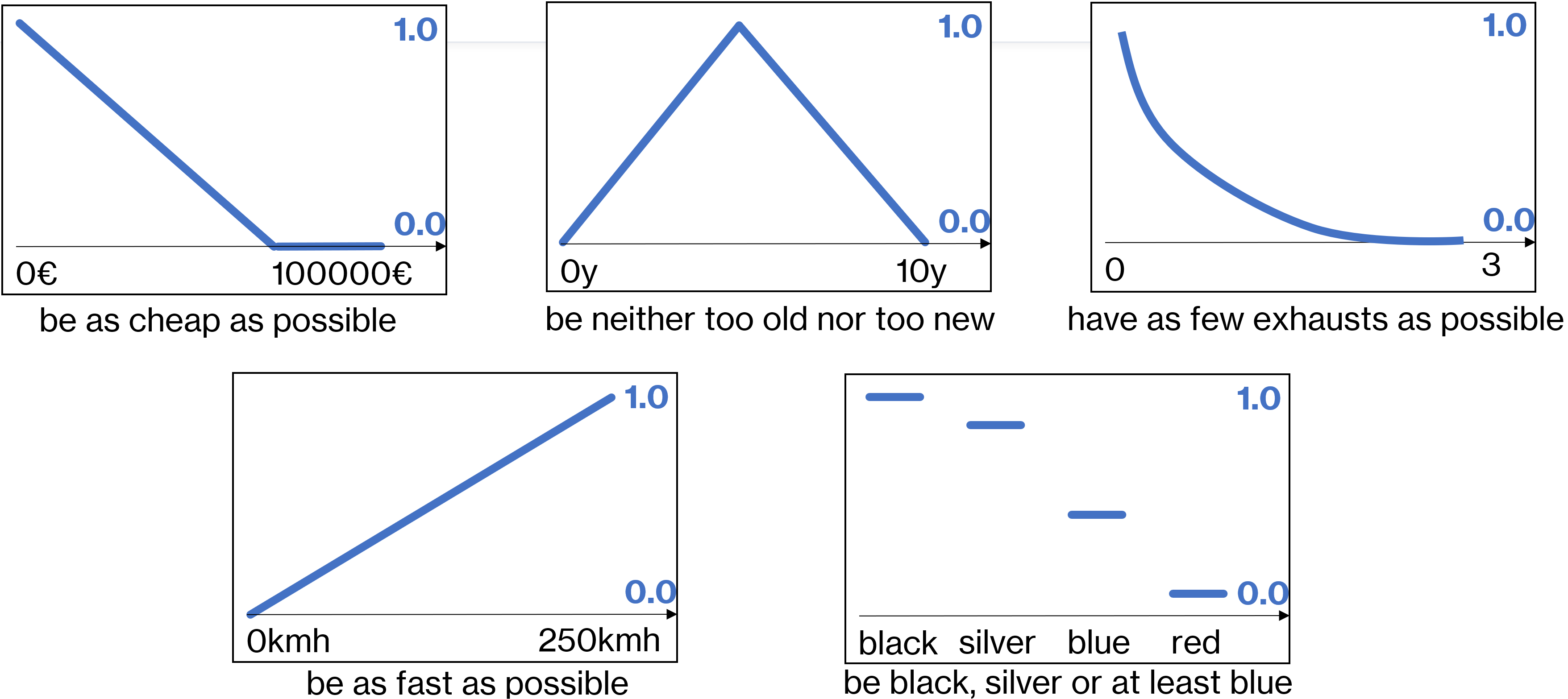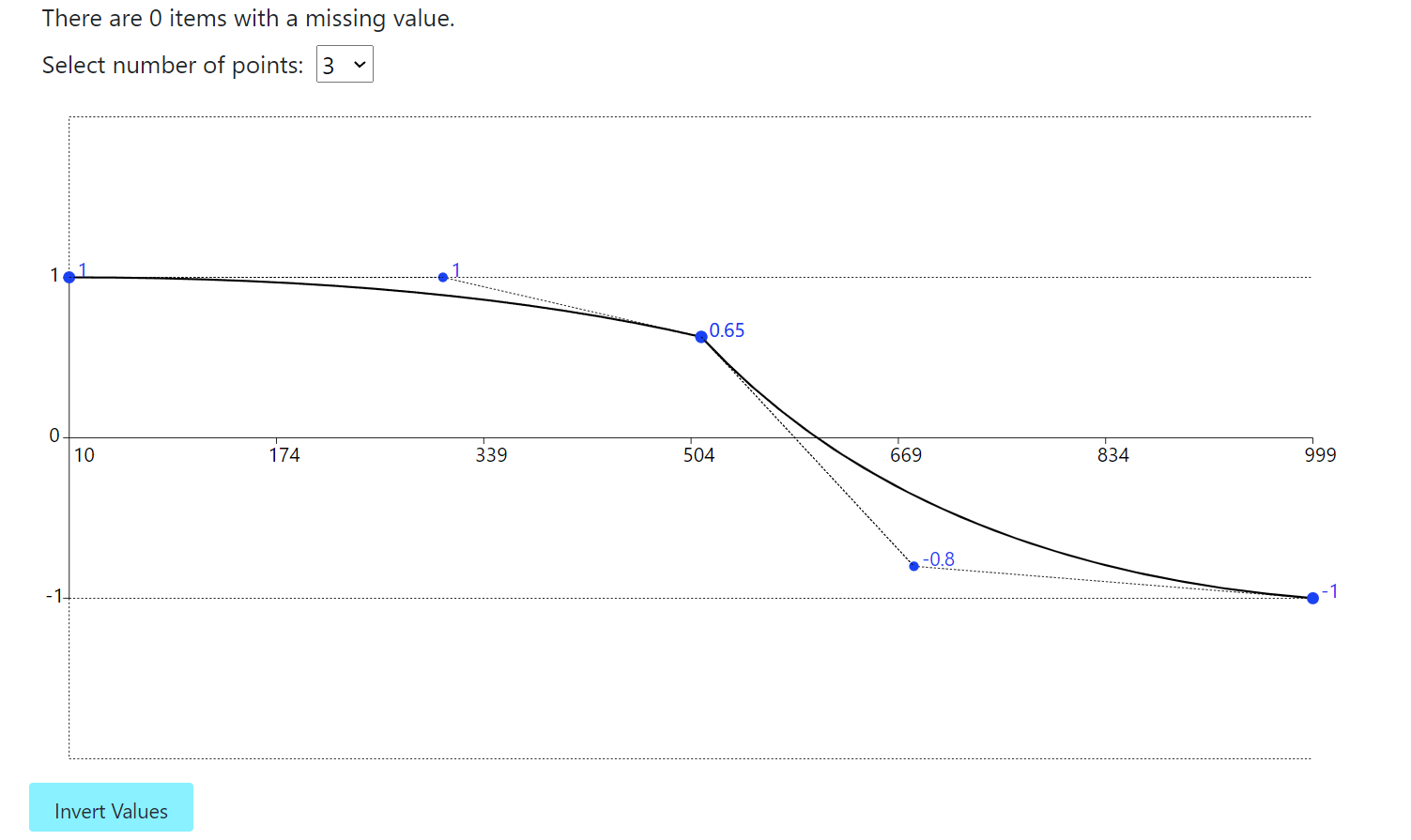Human-Centered Attribute-Based Creation of Item Rankings
Real-World Example - Buying a car based on five criteria

In most real-world examples, the decision for selecting a "best" item depends on multiple criteria, like here for buying a used car.
Project Scope
Rankings of items enable users to a) select a top candidate item, b) focus on a small set of highly preferable items, or c) identify items that are ranked particularly weak.
The human-centered ranking of multi-dimensional items is a non-trivial task. Comparing complex items to each other in order to create a ranking can be time-consuming and especially if data sets are large, there is no guarantee that the result is satisfying. A shift from item granularity to attribute granularity might be beneficial to address complex decision-making problems. As such, we assume that enabling users to define item characteristics (attributes) can be most useful. The question is: how can preferences of users be covered best?
In this project, we characterize, design, and evaluate an interactive visual Web interface to support attribute-based item ranking. The main idea is to enable users expressing their preferences about attribute values through interactive interfaces. The combination of multiple attribute preferences allows the calculation of item summary scores that can then be used to create an item ranking.
The example figure shows a case where a used car shall be bought, according to five criteria (attributes of cars). The charts show how the preferences of a user have been expressed an formalized using a visual interface. The result of the interactive tool yields top-ranked cars, to be approached.
Our work consists of the following controbutions (so far):
- A Taxonomy of Attribute Scoring Functions
- RankASco: A Visual Analytics Approach to Leverage Attribute-Based User Preferences for Item Rankings
[Paper] A Taxonomy of Attribute Scoring Functions
Shifting the analysis from items to the granularity of attributes is a promising approach to address complex decision-making problems. In this work, we study attribute scoring functions (ASFs), which transform values from data attributes to numerical scores. As the output of ASFs for different attributes is always comparable and scores carry user preferences, ASFs are particularly useful for analysis goals such as multi-attribute ranking, multi-criteria optimization, or similarity modeling. However, non-programmers cannot yet fully leverage their individual preferences on attribute values, as visual analytics (VA) support for the creation of ASFs is still in its infancy, and guidelines for the creation of ASFs are missing almost entirely. We present a taxonomy of eight types of ASFs and an overview of tools for the creation of ASFs as a result of an extensive literature review. Both the taxonomy and the tools overview have descriptive power, as they represent and combine non-visual math and statistics perspectives with the VA perspective. We underpin the usefulness of VA support for broader user groups in real-world cases for all eight types of ASFs, unveil missing VA support for the ASF creation, and discuss the integration of ASF in VA workflows.
The figure above shows the taxonomy of eight different typs of Attribute Scoring Functins (left) and a visual prototype of an Attribute Scoring Interface (right).
Materials and Bibliographic Data
- Publisher: EuroGraphics, Proceedings of the Workshop on Visual Analytics (EuroVA)
- Paper: pdf (PDF, 256 KB) | bib (BIB, 384 bytes)
- Talk Slides: Slides (PDF, 452 KB)
[Paper] RankASco: A Visual Analytics Approach to Leverage Attribute-Based User Preferences for Item Rankings
Item rankings are useful when a decision needs to be made, especially if there are multiple attributes to be considered. However, existing tools either do not support both categorical and numerical attributes, require programming expertise for expressing preferences on attributes, do not offer instant feedback, or lack flexibility in expressing various types of user preferences. In this work, we present RankASco: a human-centered visual analytics approach that supports the interactive and visual creation of rankings. RankASco leverages a series of visual interfaces, enabling broad user groups to a) select attributes of interest, b) express preferences on attribute scorings based on different mental models, and c) analyze and refine item ranking results.
The figure above shows an example of a Multi-Point continuous Attribute Scoring Function.
The figure above shows the presentation of a created item ranking in a tabular form.
Materials and Bibliographic Data
- Publisher: EuroGraphics, Proceedings of the Workshop on Visual Analytics (EuroVA)
- Paper: pdf (PDF, 662 KB) | bib (BIB, 505 bytes)
- Supplemental Material: pdf (PDF, 1 MB)
- Demo: RankASco | RankASco Manual (PDF, 715 KB)
- Code: GitHub
- Talk Slides: pdf (PDF, 1 MB)


